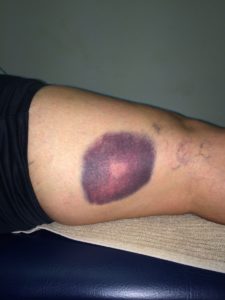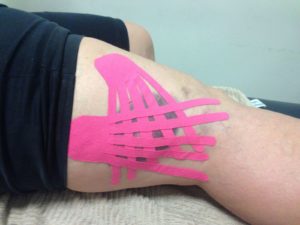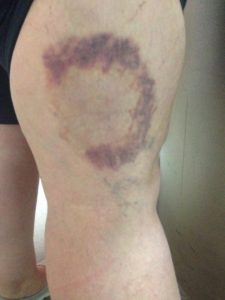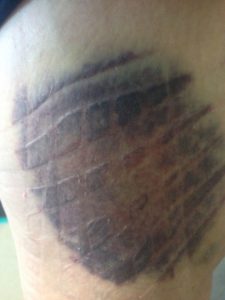What is Kinesiotape?
It’s that fancy coloured tape seen on athletes such as tennis star Li Na and soccer player David Beckham. It is an elastic tape used to treat soft tissue injuries such as muscle strains and ligament sprains. The increased elastic properties in Kinesiotape allow for more movement while still providing support when compared to rigid tape. Other uses are for pain and improved function. The following blog will focus on Kinesiotaping for swelling.
What is swelling/hematoma?
When an injury occurs, the cells that are damaged begin to break down by an influx of inflammatory mediators, aka “inflammatory soup”. This swelling that occurs is the body’s natural response to trauma. Although it indicates a response to healing broken tissues, too much of it can be bad. The increased fluid from the swelling pushes on the pain receptors causing the discomfort we feel after an injury. The hematoma is what results in addition to the swelling. It is damaged to blood vessels which is why there is a beautiful black or blue colour.
 How does it work for swelling?
How does it work for swelling?
When applied, the elastic properties help to lift the superficial layer of skin allowing for swelling to move towards the lymphatic system for removal. This benefit will help to promote healing, decrease pain all the while still allowing for movement.
Other uses for Kinesiotape?
It can be used to relax over used muscles such as the Upper Trapezius and Erector Spinae. It can also be used to activate muscles that aren’t switching on such as the Medial Quad after knee surgery or injury.
Evidence?
 Scientific evidence is currently questionable, however clinical evidence has shown effect. For example see the images below:
Scientific evidence is currently questionable, however clinical evidence has shown effect. For example see the images below:
Want to know more?
Visit us at Action Plus Physiotherapy for your sporting and activity related injuries to find out how Kinesiotape can help you return to activity and sport quicker!




